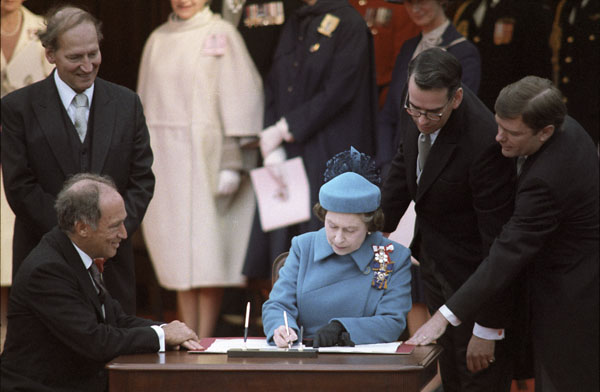The Parliament of the United Kingdom passed the Canada Act, 1982, and, as a schedule to that Act, the Constitution Act, 1982, in March of 1982. Although the Canada Act came into force upon Royal Assent on March 29, the Constitution Act did not come into force until Queen Elizabeth II made her historic trip to Ottawa to sign an official proclamation on April 17, 1982.
The Canada Act essentially declares that the United Kingdom no longer legislates for Canada.
A total of 31 documents were designated as the Constitution of Canada. This meant they were legally entrenched, and could only be changed by the amendment formula outlined in the new Constitution Act. The 31 documents include 19 U.K. statutes, 4 U.K. Orders in Council, and 8 Canadian statutes. The United Kingdom documents, namely the 19 statutes, are still statutes of the British Parliament, and the 4 Orders in Council are still Orders in Council of the Privy Council of the U.K. They have been "patriated" only in the sense that they are British documents that can now only be changed by a Canadian process.
Canada's Constitution Act contains many important provisions that shape how the Canadian federal and provincial governments can interact amongst themselves and with the public. Included within the Act is the Canadian Charter of Rights and Freedoms, that sets out and guarantees the fundamental freedoms, democratic rights, mobility rights, legal rights, equality rights, and official languages of Canada. The Constitution Act also recognized the rights of Indigenous peoples, entrenched equalization in federal grants to provinces, set out a constitutional amending process and updated the respective jurisdictions of Canada's federal and provincial governments.

